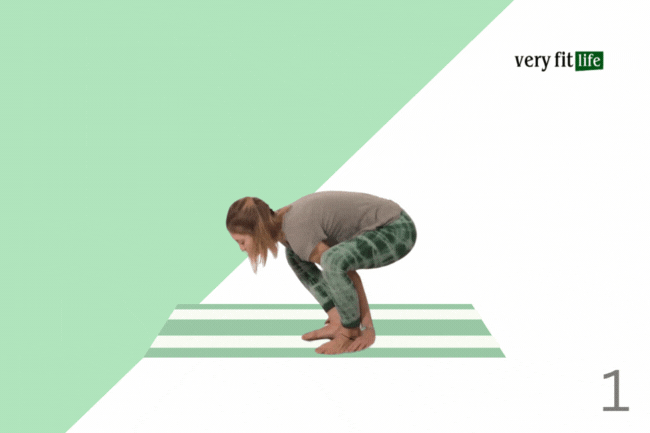As a yoga teacher, I remember the first time I tried Bhujapidasana. My arms trembled, and I could barely balance. I felt frustrated—like I’d never get it right.
But I kept trying. With time, I learned that this pose is more about focus and technique than brute strength.
Content Navigator
ToggleToday, I teach this arm-balance pose to students of all levels because it builds true strength—both physically and mentally.
Through years of practice and teaching, I’ve seen how it improves core stability, confidence, and mental clarity.
In this article, I’ll break it down so anyone—even beginners—can try it safely and effectively.
What Does the Mean of Bhujapidasana?

The name Bhujapidasana comes from Sanskrit:
- Bhuja = arm
- Pida = pressure
- Asana = pose or posture
So, it means “Arm Pressure Pose.” It’s an arm balance where your thighs rest on your upper arms while your feet cross in front of you, hovering above the ground. This asana challenges your arms, wrists, and core, but it also tests your patience and focus.
Warm-up Exercises
Before trying Bhujapidasana, it’s important to warm up the body properly to avoid injury. Focus on activating the wrists, shoulders, hips, and core.
Recommended Warm-ups:
- Cat-Cow Stretch – To warm up the spine and shoulders.
- Wrist Circles and Stretches – Loosen up the wrists.
- Downward Dog – Opens the shoulders and hamstrings.
- Garland Pose (Malasana) – Prepares the hips and knees.
- Plank to Chaturanga – Activates core and arm strength.
- Boat Pose (Navasana) – Strengthens the abs for balance.
These exercises get your body ready for the balance and lift required in Bhujapidasana.

How to Perform Bhujapidasana
Follow these steps slowly and mindfully:
Start in a Squat (Malasana)

Stand with your feet slightly wider than hip-width.
Lower into a deep squat, keeping your heels on the floor if possible.
Slide Your Hands Through

Thread each arm under your knees.
Place your palms flat on the mat, shoulder-width apart.
Position the Legs
Hook your inner thighs tightly over your upper arms.
Press your legs inward to create stability.
Cross the Feet

Lift one foot at a time and cross your ankles in front of you.
Lift Off
Lean forward slowly, shifting weight into your hands.
Engage your core and lift your feet off the mat.
Hold the Pose

Breathe deeply and hold for 5–10 seconds, working up to longer.
Gaze forward—not down—to help maintain balance.
To Release
Gently lower your feet back to the ground and come back to a squat.
Tip: It’s okay to use props or even keep your toes on a block in the beginning.
Here’s a video that explains this yoga pose in more detail.
Physical Benefits
Bhujapidasana builds more than just arm strength. Here are the main benefits:
- Improves arm and shoulder strength
Your body weight challenges the arms and builds upper body endurance. - Tones abdominal muscles
Core engagement is key in maintaining lift and balance. - Strengthens wrists and hands
Helps prevent injuries and supports other arm-balance poses. - Improves hip flexibility
Opens inner thighs and hips as legs squeeze around the arms. - Enhances balance and posture
Aligning your center of gravity builds control and awareness.
Mental Benefits
This pose is also a workout for the mind:
- Boosts focus and concentration
You can’t hold Bhujapidasana without being fully present. - Reduces anxiety
Controlled breathing calms the nervous system. - Increases confidence
Mastering a challenging pose like this can build self-trust. - Strengthens patience and discipline
Progress is slow but rewarding, teaching perseverance.
Variations and Modifications
Not everyone will nail this pose right away—and that’s okay! Try these easier options:
- Block Support
Place a block under your feet to lift off more easily. - Keep toes on the ground
Practice getting into position without lifting your feet. - Use a strap
Wrap a yoga strap around your upper arms to prevent slipping.
Advanced variation:
- Try straightening your legs forward from the arm balance to move into Tittibhasana (Firefly Pose).
Safety Precautions
To avoid injury, always practice with awareness:
- Avoid if you have wrist, shoulder, or elbow injuries.
- Do not force the legs behind the arms—move slowly.
- Engage your core to protect your lower back.
- Don’t hold your breath. Inhale and exhale smoothly.
- Practice on a soft surface or use a folded blanket for extra wrist support.
If you’re unsure, practice under a certified yoga teacher’s guidance.
Final Words
Bhujapidasana looks intimidating, but with consistent practice, it becomes more achievable than you think.
I’ve seen complete beginners progress to full arm balance over time, and the joy on their faces is always priceless.
Remember, it’s not about perfection—it’s about effort, awareness, and growth. Whether you’re just starting or refining your technique, be patient with yourself.
As a teacher and practitioner, I believe this pose helps build not just a strong body, but a steady mind. Try it with curiosity and an open heart—you may surprise yourself.
Sources:
Yoga Journal. (2025, March 22). Shoulder-Pressing pose.
Wiese, C. (2023, October 30). What are we doing in Bhujapidasana? Yoganatomy.
Admin. (2024, July 11). Bhujapidasana: 6 Amazing Benefits, tips, techniques, correct form, and Common Mistakes. Rishikul Yogshala Rishikesh.
















